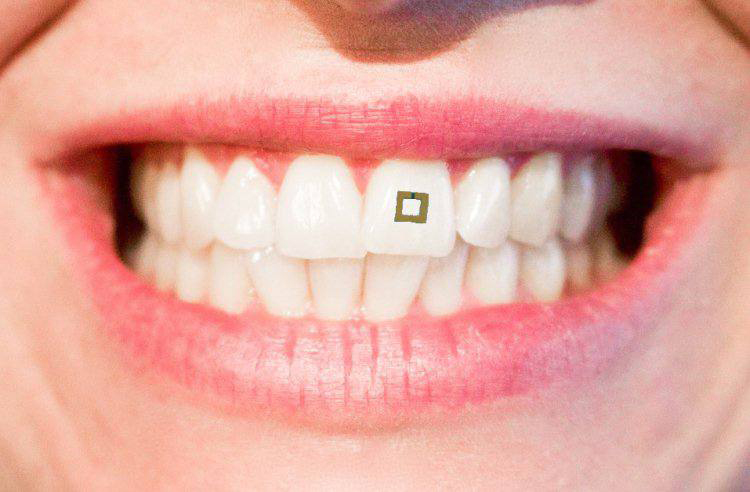Scientists create tiny sensor of alcohol, glucose and salt
The device can be attached to the surface of the tooth and helps in monitoring the patient.
Nowadays, when doctors ask patients to monitor some body function, for example blood pressure, it is necessary to carry devices that cause discomfort. But what if we could reduce the size of these devices to something millimeter? Researchers at Tufts University in Massachusetts have created a capable sensor that is so small that it can be glued to the surface of a tooth and can monitor the consumption of glucose, salt, and alcohol. The information collected by the device can still be transmitted wirelessly to other devices. The study was published in the scientific journal Advanced Materials.
Scientists believe that future versions of the sensor will allow monitoring of a wide variety of nutrients, chemicals and physiological states, including dehydration. The device is flexible and is only two millimeters in length, fitting easily to the surface of the tooth. It is composed of three layers: the central unit absorbs the substance to be monitored and the two outer layers are covered by a silk film, biocompatible material, functioning as a small antenna, transmitting information through RFID technology by radiofrequency.
The data collected by the sensor, however, vary according to the configuration of the central layer. If it comes into contact with the desired substance, such as salt or alcohol, its electrical properties change, causing a different frequency of radio waves to be reflected. This allows the consumption of these foods to be constantly measured and recorded. "In theory, we can modify the central layer of the sensors to evaluate other chemicals. We are limited only by our own creativity," says Fiorenzo Omenetto, one of the authors of the research, in an article published in Advanced Materials. "We extend the common RFID technology to a sensor that can dynamically read and transmit information about its environment whether it is fixed to a tooth, to the skin or to any surface," the scientist adds.
Tests conducted in the United States show that the device works reliably for a period of one week. In addition, it was tested four times in humans under various conditions, such as with dry mouth and after consumption of tap water, apple juice, alcohol, mouthwash and soup.
The current version only detects consumption of salt, glucose and alcohol, which may help doctors monitor patients with diabetes or hypertension, for example. But, according to researchers, the device can be adjusted to measure Ph, temperature and even hydration of the mouth. In addition, more layers can be added to the system to increase its capacity.
See also:


